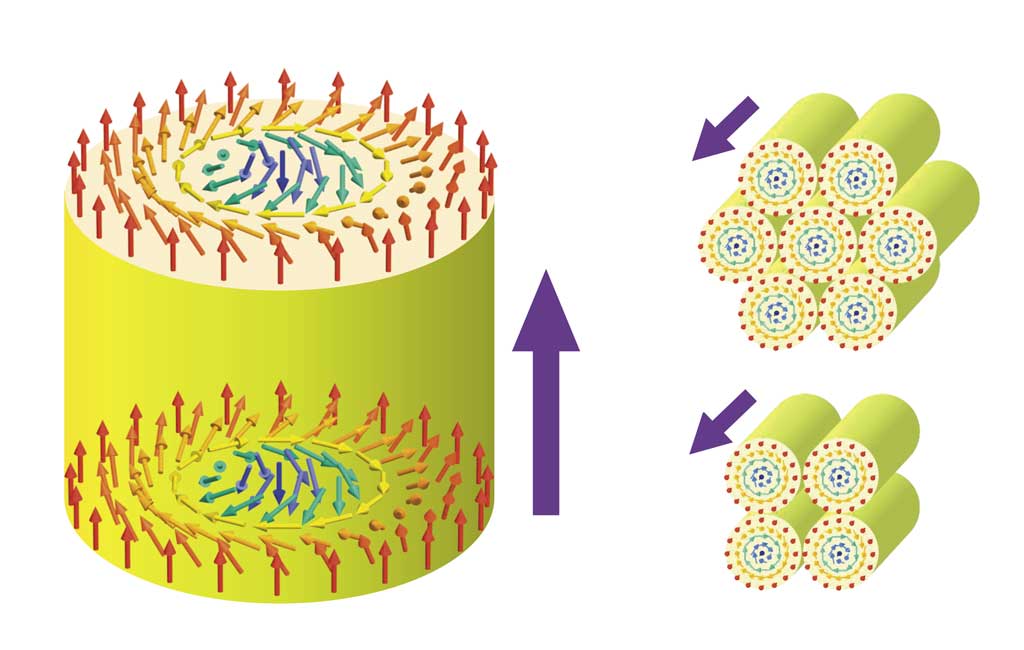
Left: Skyrmions are whirling patterns in the magnetic orientations of atoms. Under an external magnetic field (purple arrows), atoms on the outside of the skyrmion align their magnetic moments (red) with the field, while those at the core of the skyrmion point in the opposite direction (blue). Right: Skyrmions can stack up to form a triangular (‘honeycomb’) or square lattice. Image: Reprinted by permission from Macmillan Publishers Ltd: Nature Communications, copyright (2017).
Tiny swirling magnetic patterns called skyrmions can pack together to form neat lattices inside certain magnetic materials. These lattices are promising for spintronics — a new form of computing that exploits the magnetic characteristics of atoms to manage data. But their usefulness is limited because they typically exist only within a narrow window of temperatures and magnetic fields.
Now, Kosuke Karube of the RIKEN Center for Emergent Matter Science and colleagues have discovered that skyrmion lattices in a crystalline cobalt−zinc−manganese alloy can survive over a wide range of temperatures and magnetic fields, pointing the way to practical skyrmion-based spintronics.
Each of the three metals — cobalt, zinc, and manganese — in the alloy has unique magnetic properties that influence the material’s magnetism. Below 27 degrees Celsius, the alloy can assume several different magnetic states, which Karube’s team mapped using techniques such as neutron scattering.
Between 11 and 27 degrees Celsius, a stable honeycomb lattice of skyrmions formed when a small magnetic field was applied. But when the temperature dropped below 11 degrees Celsius, the skyrmion lattice was no longer in the most energetically stable state. Instead, very slow cooling caused each atom to orient its magnetism so that it was slightly out of alignment with its neighbors, which collectively formed spirals in the crystal’s intrinsic magnetism. These spirals come in two forms, known as helical and conical magnetic states.
However, relatively rapid cooling prevented these states from occurring and preserved the honeycomb skyrmion lattice in a higher-energy ‘metastable’ state. This lattice was stable enough to last indefinitely below -13 degrees Celsius under a broad range of magnetic fields.
Below about -123 degrees Celsius, the lattice began to change shape to form a square lattice, which had never been seen before. Warming reinstated the honeycomb lattice, rather than degrading it to the lower-energy helical or conical states — the first time such a skyrmion lattice transition has been observed. “Once created, the metastable skyrmions are difficult to destroy,” says Karube.
Practical applications will require skyrmions that are stable at room temperature and zero magnetic field, he adds. Lowering the manganese concentration within the alloy could enable the team to achieve this.
“Cobalt−zinc−manganese alloys are very exciting and promising materials, but their whole picture is still a mystery,” says Karube. “By controlling their chemical composition, we aim to clarify the mechanism behind the observed novel skyrmion states, and further explore these new physical phenomena.”
Source: Riken




